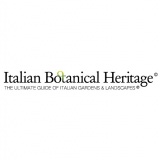
 Italian Botanical Heritage
Italian Botanical Heritage
Italian gardens: The Biviere garden in Lentini, Siracusa
- WTI Magazine #101 Mar 17, 2018
-

 Italian Botanical Heritage
Italian Botanical Heritage
Born from the love and botanical passion of the last owners, the princes Scipione and Maria Carla Borghese, the Biviere Garden occupies a vast area between the plain of Catania and the northern slopes of the Iblei Mountains, west of the Ionian Sea. A wonderful example of a Mediterranean-Esotic garden, it extends for about 3 hectares, on three different levels.
It is also known as the "garden of myth", because of the ancient legend that tells the origins of the place: the mythical hero Hercules, the strongest son of Jupiter, after having defeated the lion Nemeo wanted to donate its skin to Ceres, goddess of the harvest, who lived in the city of Lestrigons. Enchanted by this land, he gave birth to a lake, which he baptized Lacuus Erculeus. Over the centuries, the lake changed its name to "Biviere", or watering of flocks and fish nursery.
History
In 1392, Martino I, king of Sicily, granted "Biviere di Lentini" as a fief to an ancestor of Scipione Borghese. The main house, a simple country house built before the 17th century, once overlooked an ancient lake port. Quoted by Verga in the novel "La Roba", the lake was dried up in the thirties of the twentieth century, to defeat the scourge of malaria. In 1968, the Biviere became the residence of Scipione and Maria Carla Borghese, who decided to transform this abandoned moorland into a garden, today belonging to the circuit of the Great Italian Gardens. The lake was restored, albeit smaller in size and further away from the house.
The manor house (Villa Borghese)
The main house, built before 1693, the year in which the earthquake that struck eastern Sicily damaged its facade, overlooks what was once a port, closed by large boulders cut by man. L-shaped, on two floors, it is enriched by a beautiful portal and light stone windows that open onto an area paved in terracotta, decorated with four grapefruit plants (Citrus x paradisi). The building is home to 5 specimens of Cereus app. from Central and South America and a majestic Euphorbia canariensis. On the back there is the ancient inn, which once housed hunters, and a chapel built by the first owners of the estate, the Lanza Branciforti, dedicated to Sant'Andrea (Saint Andrew), protector of fishermen.
Plants
Inserted on what were once the piers of the old port, the collection of succulent plants made by the owners has a rich choice of aloe (Aloe marlothii, A. ferox, A. A. saponaria, A. striata, A. commixta), agave (Agave ferox, A. Salmiana, A. striata), sedum, euphorbias and many crassualcee, coming from various parts of the world but well set in Sicily. Thanks to a long and careful work of acclimatization, they can withstand the strong temperature variations of the place. Some specimens of Yucca elephantipes were then planted in the space inside the piers, once occupied by water, today surrounded by a simple lawn.
In the garden there are also many Mediterranean and exotic species, including oleanders (Nerium olenader), palm trees (Phoenix spp.), Carob trees (Ceratonia siliqua), cypress trees (Cupressus sempervirens), monumental pines, jasmine, Strelizia reginae, a rare example of Xanthorrea arborea and one of Encefaloartus horridus (a species believed fossil and then found alive in Tanzania), Moroccan birches and false pepper (Schinus molle). Many roses embellish the garden, including a magnificent Rosa x fortuniana, which gives a rich white bloom in May.
Besides, thanks to the marsh vegetation that grows around the new lake, the Biviere Garden represents an important oasis for the resting and nesting of many birds.